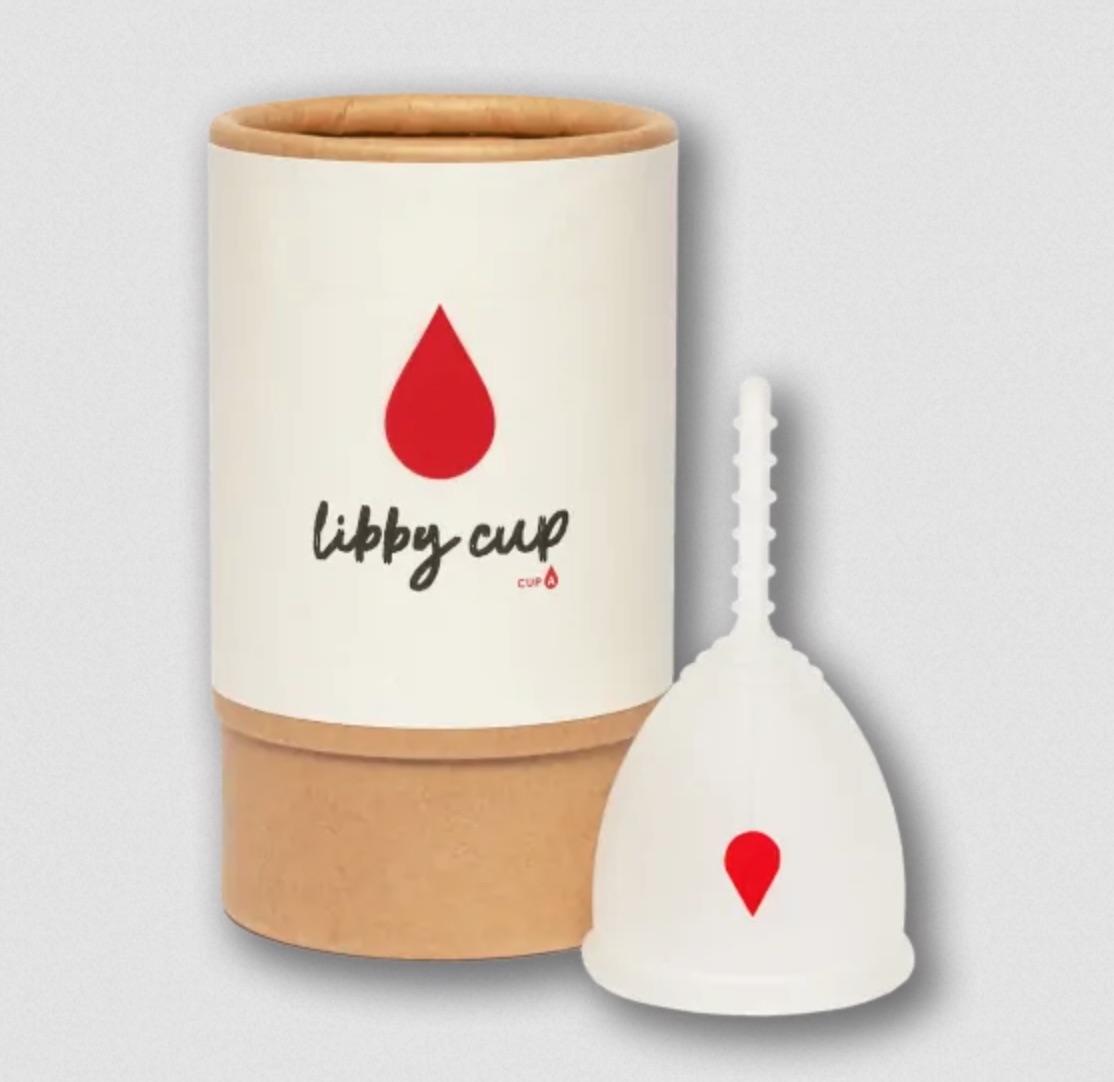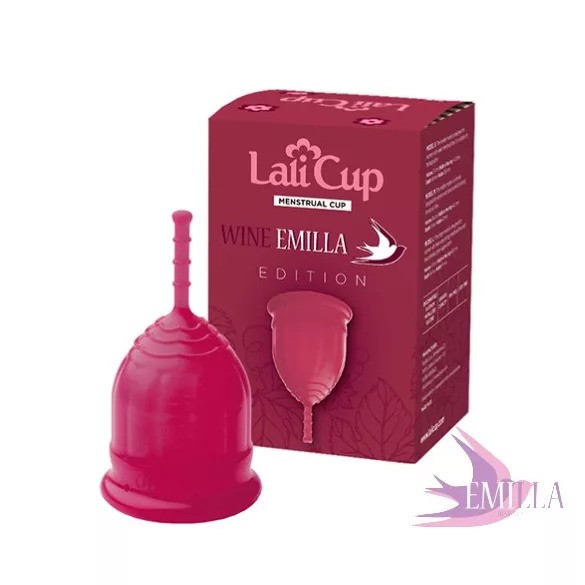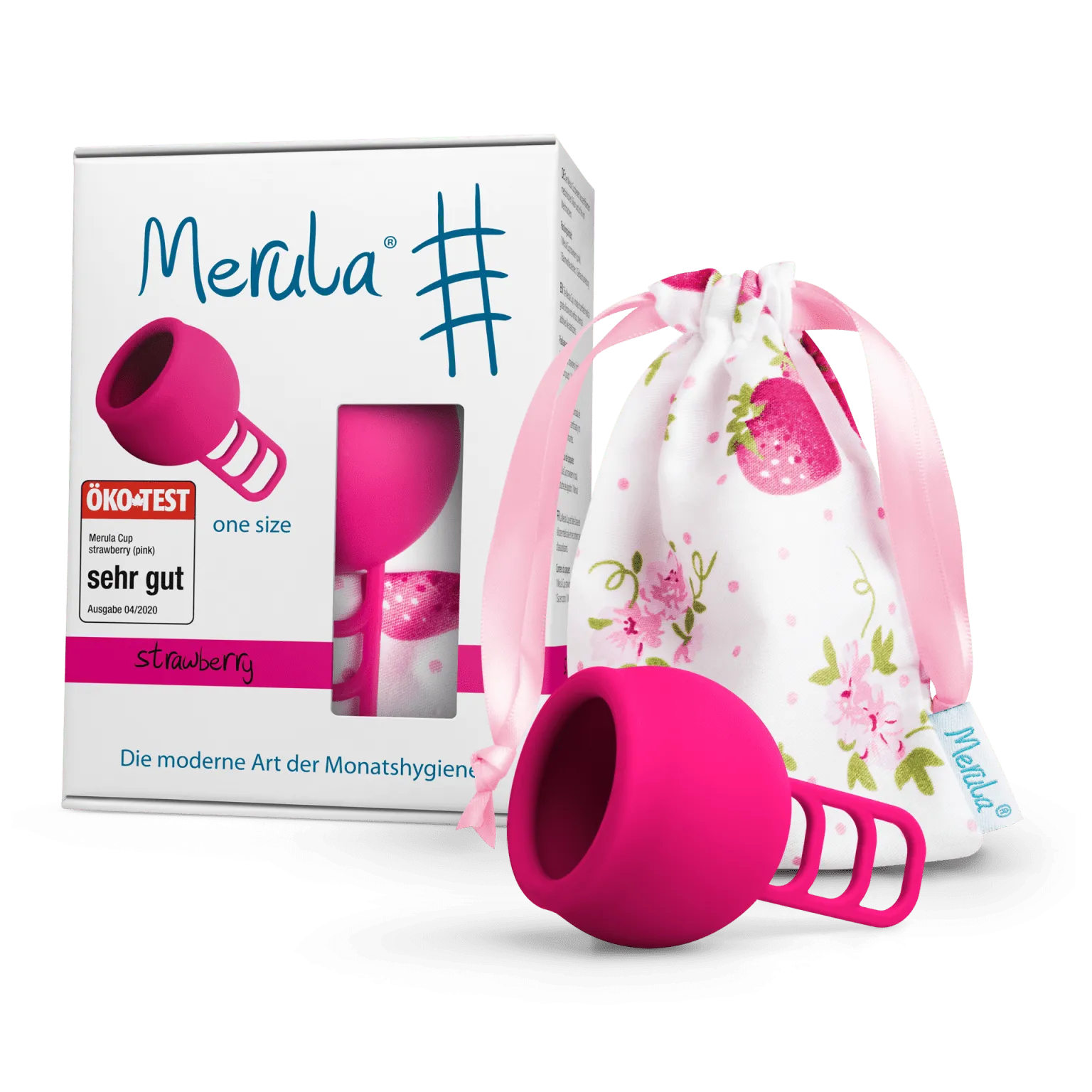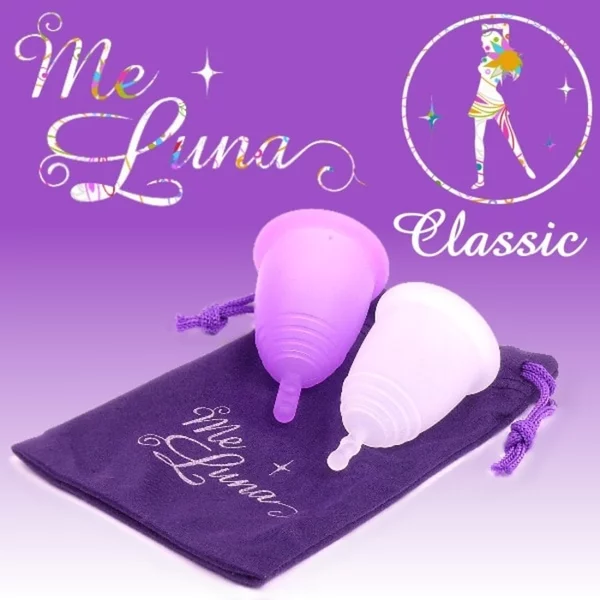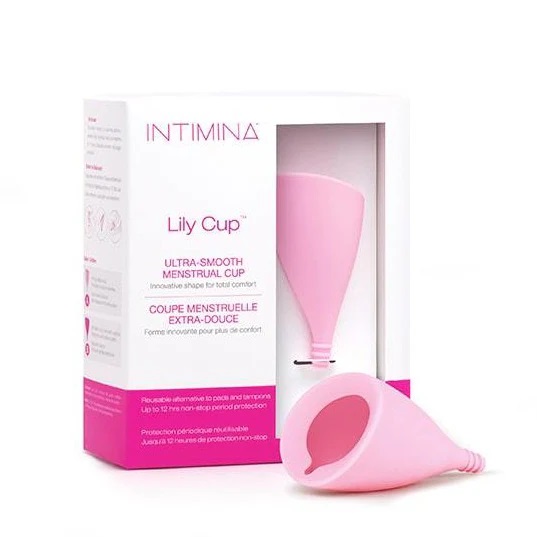When choosing a menstrual cup you will often hear people talking about their cervix, being low, short and whatnot.
This the most common question I am getting when I receive emails asking for guidance. I will recommend on separate articles which menstrual cups are best to use in each case but I wanted to shed some light on what the cervix is and how to assess yours to find your Goldilocks cup.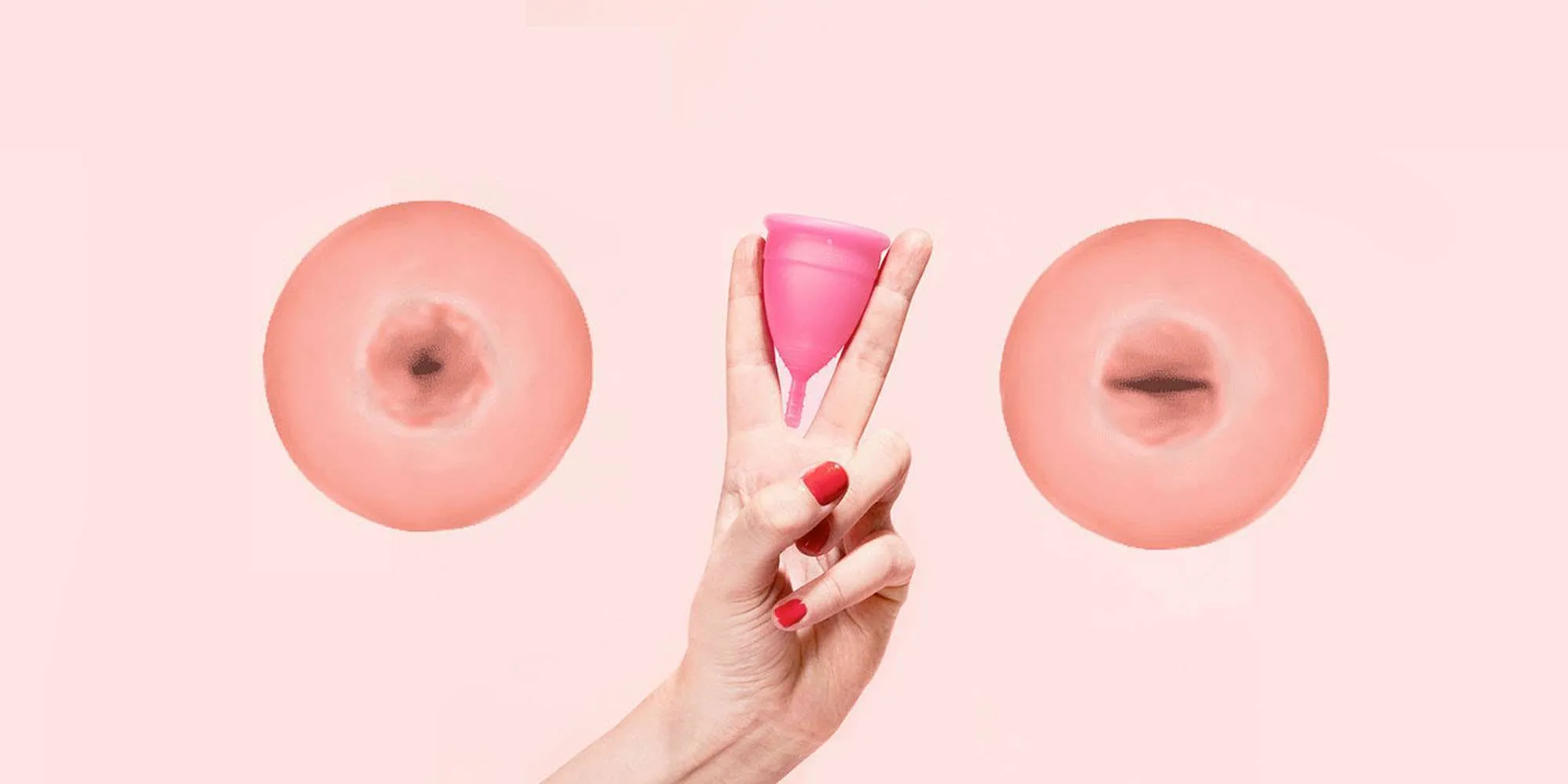
What is the cervix?
The cervix is a tiny but very important part of female anatomy. It is essentially the connection between the vagina and the uterus. It looks like a little doughnut of flesh around 3cm in diameter, that varies in firmness depending on your menstrual cycle, pregnancy and arousal. It has a tiny opening that allows sperm to swim in and menstrual fluid to flow out. Your multi functional cervix is also designed to adapt for childbirth, with the ability to expand up to 10cm during labor.
Check out pictures of actual cervixes at the Beautiful Cervix Project where you can see how it evolves throughout the cycle.
What has the cervix got to do with choosing your menstrual cups?
Buying a pair of shoes that don’t fit you is a pretty uncomfortable experience, Well imagine buying something for your vagina that doesn’t fit…If you know the length of your vaginal canal, then you can choose the menstrual cup that is the best length for your body.
Menstrual cups come in all kinds of shapes and sizes, but what’s important is that it sits below your cervix to collect the flow, while also being fully inside the vagina (stem and all). Look at the image below to understand why it can’t sit past your cervix, it would defeat the purpose of wearing a cup if the flow is going right past it. So find out your measurements, check the dimensions of your cup, and see how it measures up before you buy your menstrual cup.
When choosing a menstrual cup you will often hear people talking about their cervix, being low, short and whatnot. This the most common question I am getting when I receive emails asking for guidance.
There are also factors to consider other than your cervix height. Your flow, the tonicity of your pelvic floor, your child birth history are also part of it. Read my tips on how to choose a menstrual cup.
So how do I measure my cervix height?
Insert a (clean) finger into your vagina. Keep moving until the tip of your finger is touching your cervix. You’ll be able to distinguish your cervix from the rest of your vagina, as the tissue is a little bit firmer than your vaginal walls. It feels a little like the tip of your nose.
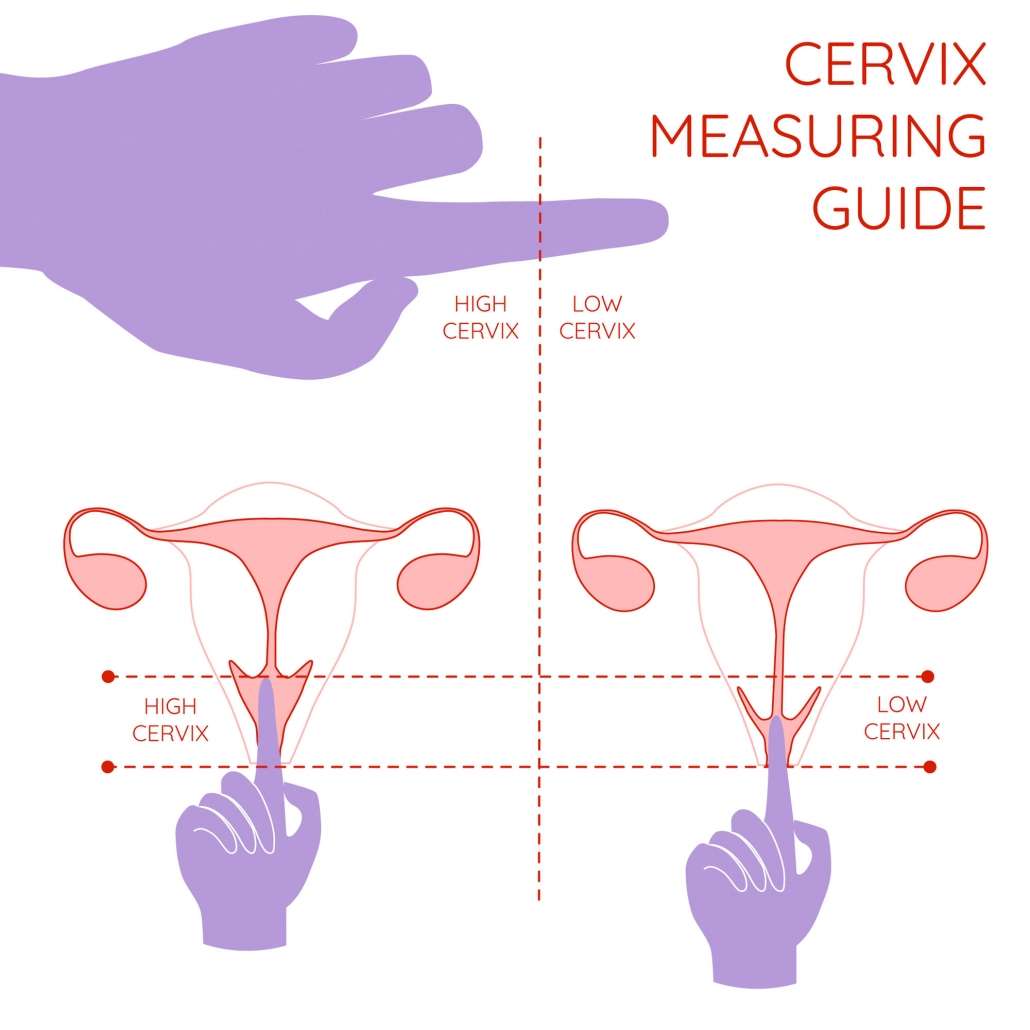
Find a Comfortable Position: You can measure your cervix height while standing with one foot elevated, squatting, or sitting on the toilet. Choose a position that you find comfortable and allows easy access to your vaginal canal.
Relax Your Pelvic Muscles: Take a few deep breaths and consciously relax your pelvic muscles. Tension can make the process more challenging.
Insert Your Finger(s): Gently insert one or two fingers into your vagina. You can use your middle finger or index finger, depending on what feels more comfortable.
Locate Your Cervix: As you insert your finger(s), continue to move them deeper into the vaginal canal until you can feel your cervix. The cervix feels like a small, round, fleshy bump or knob. It might have a dimple in the center.
Assess the Height: Pay attention to where your fingers can reach and assess the height of your cervix. You can classify the cervix height as follows:
- Low Cervix: If your fingertip easily reaches the cervix without having to insert your fingers deeply, it’s considered low.
- Mid Cervix: If you need to insert your fingers further before reaching the cervix, it’s at a mid-height.
- High Cervix: When you need to insert your fingers deeply, and it’s challenging to reach the cervix, it’s considered high.
The monthly cycle of your cervix
It’s not just your period that is affected by your monthly hormone cycle.
Your cervix can actually move throughout your cycle as well! Around ovulation (when you’re most fertile) the cervix is often higher in the vaginal canal and tends to be a bit softer. Close to and during menstruation, many women’s cervixes move lower in the vagina and become firmer. Your cervix height even changes throughout your period, which also affects the type and length of cup you should buy. Try checking your cervix height at different stages throughout the month and your period, so you can be sure to pick a cup that fits you throughout menstruation.
Here’s a general overview of how the menstrual cycle affects the position of the cervix
Menstrual Period (Days 1-5)
- During menstruation, the cervix is typically at its lowest position in the vaginal canal.
- The cervix feels firm and is relatively easy to reach.
Follicular Phase (Days 1-13)
- After menstruation, as a woman enters the follicular phase, the cervix begins to rise in the vaginal canal.
- It gradually becomes softer to the touch and may feel more closed.
Ovulation (Around Day 14)
- During ovulation, which occurs approximately in the middle of the menstrual cycle, the cervix is usually at its highest point in the vaginal canal.
- It becomes very soft, almost like touching lips, and may feel slightly open.
- This position and texture change is influenced by the surge in estrogen that occurs just before ovulation.
- Lutheal Phase (Day 15-28)
- After ovulation, as the body enters the luteal phase, the cervix gradually descends back down the vaginal canal.
- It becomes firmer and less open.
- These changes are influenced by the rise in progesterone, which occurs during this phase.
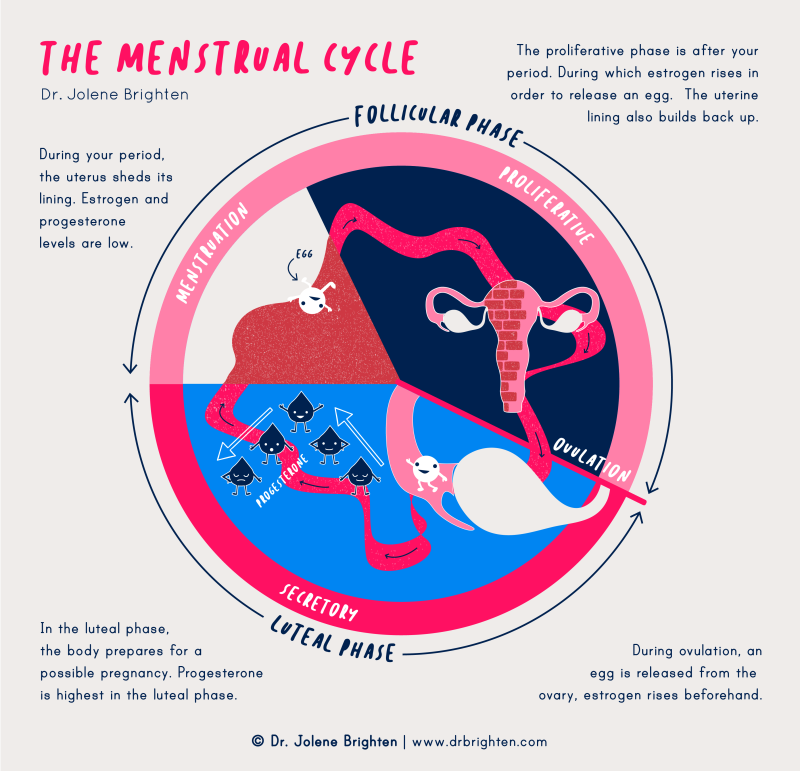
It’s important to note that these changes are general patterns and can vary from person to person. Some individuals may not notice significant changes in the position or texture of their cervix during their menstrual cycle, while others may observe more pronounced shifts. Monitoring cervical position can be a component of fertility awareness methods for tracking ovulation and optimizing the chances of conception. However, it’s essential to remember that cervical position alone is not a foolproof method of contraception or fertility prediction, and it should be used in conjunction with other tracking methods if needed.
The different uterine position?
Anteverted Uterus: An anteverted uterus is the most common and typical position of the uterus in the female pelvis. In this position, the uterus tilts forward, leaning slightly towards the bladder. This is the natural position of the uterus in most women.
Anteflexed Uterus: An anteflexed uterus refers to a uterus that not only tilts forward (anteverted) but also has a forward bend or flexion at the cervix. It essentially leans forward and is slightly bent at the cervix towards the bladder. This position is also quite common and considered normal.
Retroflexed Uterus: A retroflexed uterus is one that tilts backward, away from the bladder, towards the spine. This position can sometimes be associated with discomfort or pain during menstruation or sexual intercourse, but it’s generally considered a variation of normal uterine positioning.
Retroverted Uterus: A retroverted uterus is a uterus that tilts backward, typically without the additional flexion seen in a retroflexed uterus. It’s another common variation in uterine positioning and may be naturally occurring or caused by factors like childbirth, pelvic surgeries, or endometriosis. While it’s usually harmless, it can occasionally lead to discomfort or pain, especially during certain activities.
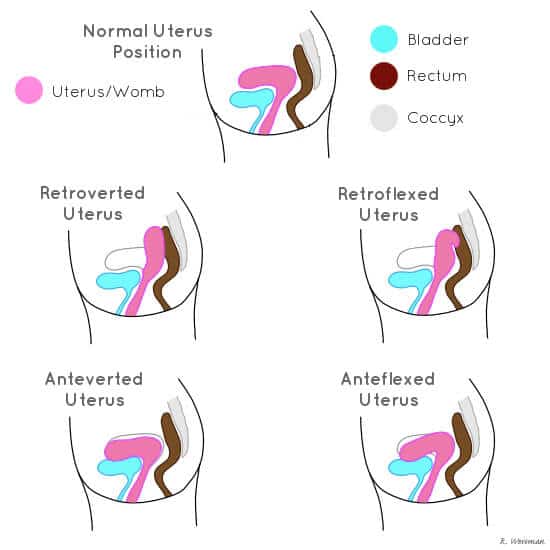
These positions can vary from person to person and may change over a woman’s lifetime due to factors like pregnancy, childbirth, or medical conditions. Most of these positions are considered variations of normal and do not necessarily indicate a medical problem. However, if someone experiences persistent pain or discomfort related to their uterine position, it’s advisable to consult a healthcare provider for evaluation and appropriate management.


